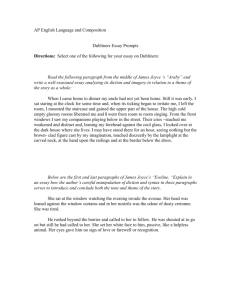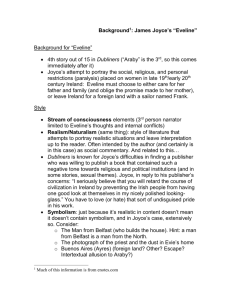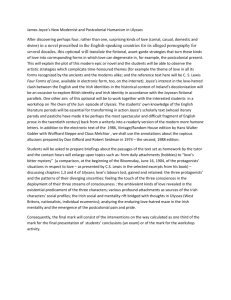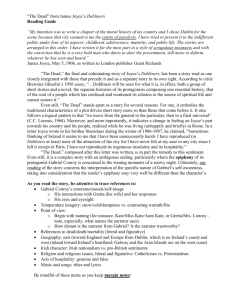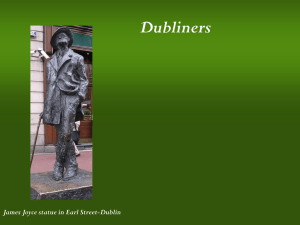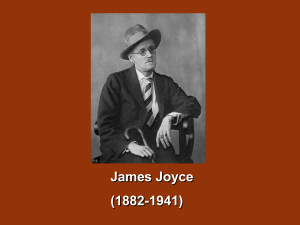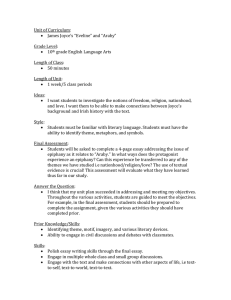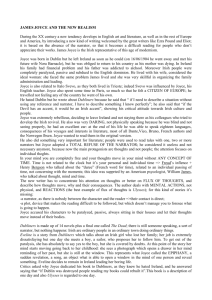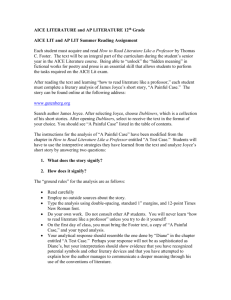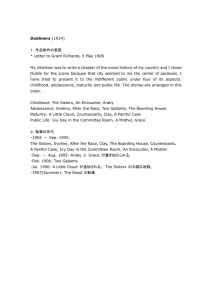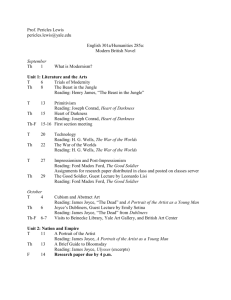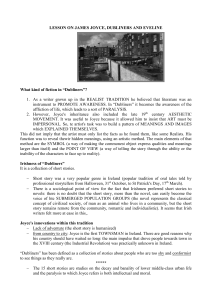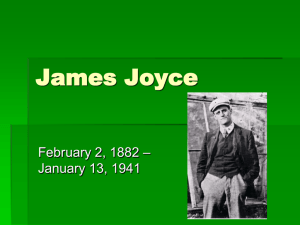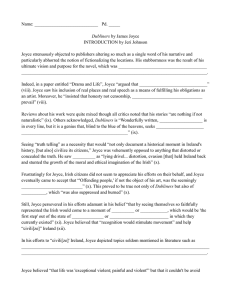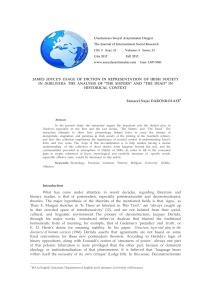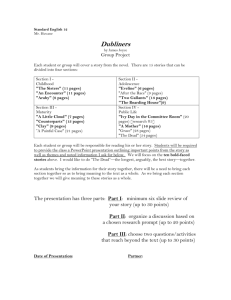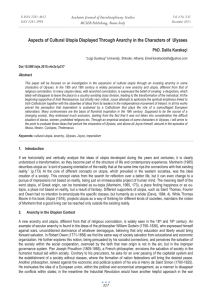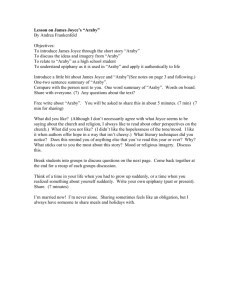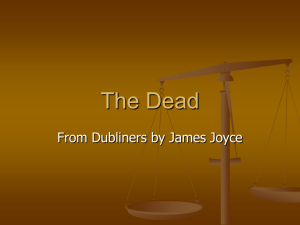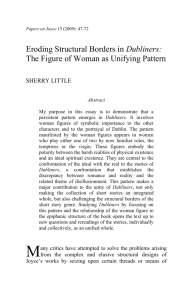Some Notes on Dubliners
advertisement
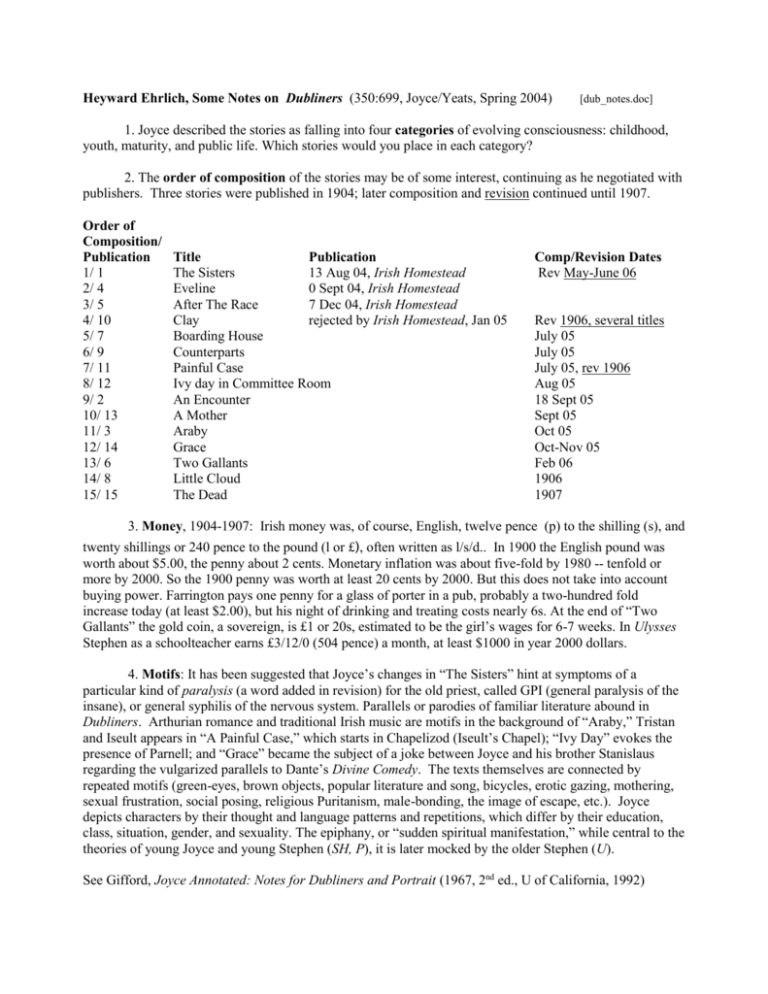
Heyward Ehrlich, Some Notes on Dubliners (350:699, Joyce/Yeats, Spring 2004) [dub_notes.doc] 1. Joyce described the stories as falling into four categories of evolving consciousness: childhood, youth, maturity, and public life. Which stories would you place in each category? 2. The order of composition of the stories may be of some interest, continuing as he negotiated with publishers. Three stories were published in 1904; later composition and revision continued until 1907. Order of Composition/ Publication 1/ 1 2/ 4 3/ 5 4/ 10 5/ 7 6/ 9 7/ 11 8/ 12 9/ 2 10/ 13 11/ 3 12/ 14 13/ 6 14/ 8 15/ 15 Title Publication The Sisters 13 Aug 04, Irish Homestead Eveline 0 Sept 04, Irish Homestead After The Race 7 Dec 04, Irish Homestead Clay rejected by Irish Homestead, Jan 05 Boarding House Counterparts Painful Case Ivy day in Committee Room An Encounter A Mother Araby Grace Two Gallants Little Cloud The Dead Comp/Revision Dates Rev May-June 06 Rev 1906, several titles July 05 July 05 July 05, rev 1906 Aug 05 18 Sept 05 Sept 05 Oct 05 Oct-Nov 05 Feb 06 1906 1907 3. Money, 1904-1907: Irish money was, of course, English, twelve pence (p) to the shilling (s), and twenty shillings or 240 pence to the pound (l or £), often written as l/s/d.. In 1900 the English pound was worth about $5.00, the penny about 2 cents. Monetary inflation was about five-fold by 1980 -- tenfold or more by 2000. So the 1900 penny was worth at least 20 cents by 2000. But this does not take into account buying power. Farrington pays one penny for a glass of porter in a pub, probably a two-hundred fold increase today (at least $2.00), but his night of drinking and treating costs nearly 6s. At the end of “Two Gallants” the gold coin, a sovereign, is £1 or 20s, estimated to be the girl’s wages for 6-7 weeks. In Ulysses Stephen as a schoolteacher earns £3/12/0 (504 pence) a month, at least $1000 in year 2000 dollars. 4. Motifs: It has been suggested that Joyce’s changes in “The Sisters” hint at symptoms of a particular kind of paralysis (a word added in revision) for the old priest, called GPI (general paralysis of the insane), or general syphilis of the nervous system. Parallels or parodies of familiar literature abound in Dubliners. Arthurian romance and traditional Irish music are motifs in the background of “Araby,” Tristan and Iseult appears in “A Painful Case,” which starts in Chapelizod (Iseult’s Chapel); “Ivy Day” evokes the presence of Parnell; and “Grace” became the subject of a joke between Joyce and his brother Stanislaus regarding the vulgarized parallels to Dante’s Divine Comedy. The texts themselves are connected by repeated motifs (green-eyes, brown objects, popular literature and song, bicycles, erotic gazing, mothering, sexual frustration, social posing, religious Puritanism, male-bonding, the image of escape, etc.). Joyce depicts characters by their thought and language patterns and repetitions, which differ by their education, class, situation, gender, and sexuality. The epiphany, or “sudden spiritual manifestation,” while central to the theories of young Joyce and young Stephen (SH, P), it is later mocked by the older Stephen (U). See Gifford, Joyce Annotated: Notes for Dubliners and Portrait (1967, 2nd ed., U of California, 1992)
